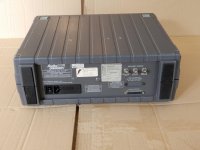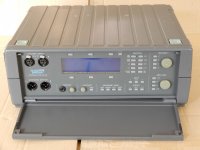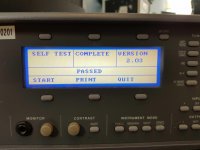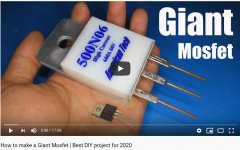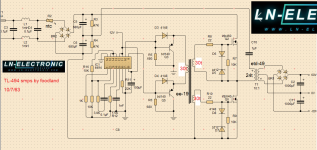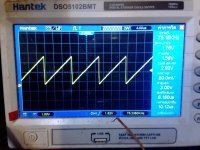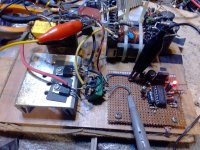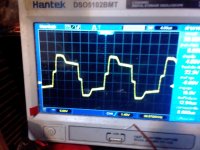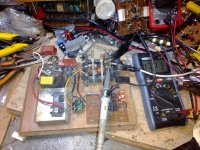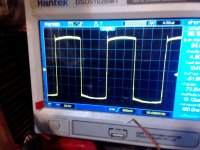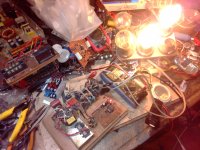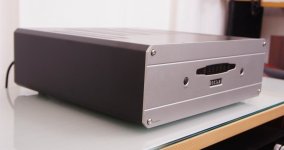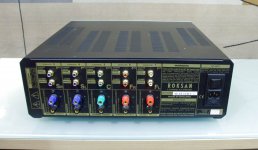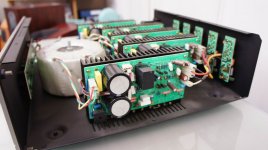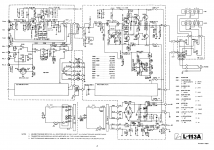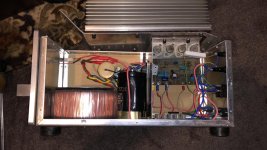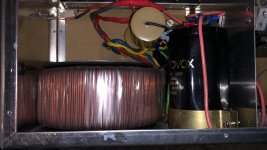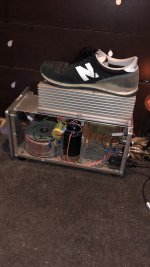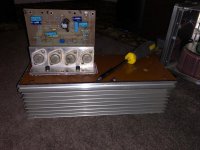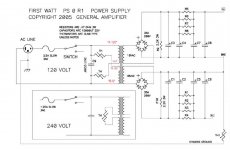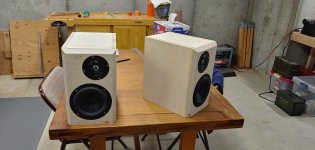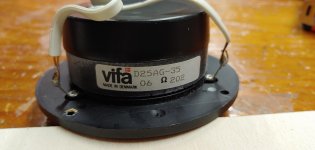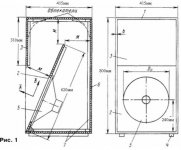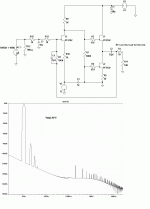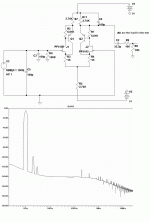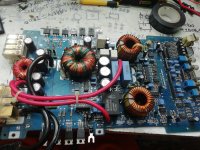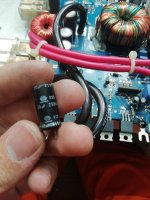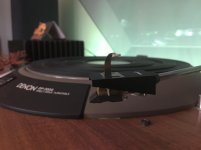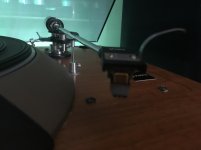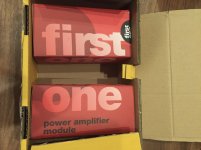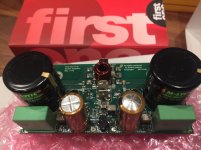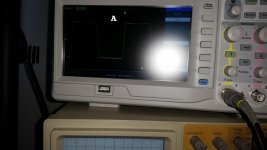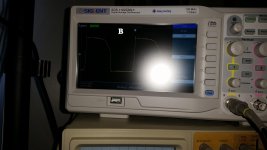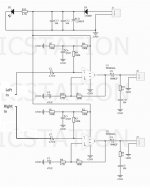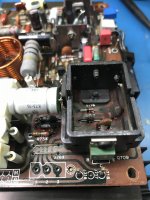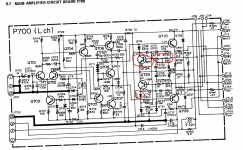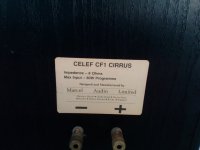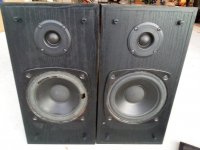I started writing about this over in the fullrange forum, threadjacking a thread about the Techtonic Elements TEBM35C10. So, to start this off, I'll copy out the rather windy text and photos I put over there to explain what I'm attempting to do.
Short version: First tests have been very positive to my ears.
__________________from the fullrange forum____________________
My living room (main floor of house) is quite small, but it's the most comfortable room in the house and where I mostly hang out. I have a 'listening area' in the basement, but it's a basement, it's dark, it's too close to the noise furnace/Air conditioning unit, and isolated away from my wife. So I've been concentrating on improving the listening situation in the living room.
The only practical way to arrange speakers in here (and that would also satisfy my wife's preference for room arrangement) is with speakers in the long wall. But in that arrangement, the speakers have to be right against the wall, particularly if the listening seats are going to have any space behind them to that wall back there. Dipoles or speakers that need space behind them to sound even passable aren't an option. So, I've taken that as a challenge to get something that fits in there and works well against the wall. Something small is a plus, both to not dominate the room visually and to keep the wife happy. And keeps me out of the competitions for speaker designs that might be the 'best there could be under any impractical conditions in a room no one would want to spend much time in' type of thing that seems pretty well covered already.
So, I've come up with miniaturized Synergy/Unity type waveguide speakers (the SmallSyns, documented elsewhere on this forum), which are great with handling energy off side walls and giving good overall performance. Those of you've who've built or heard well-implemented Synergy horns know how well they produce a sound field that doesn't seem to come out of the speakers but somehow just from an area -- it really takes some effort to convince a listener or even myself sometimes that the sound is actually coming from the two speakers. They even give a good sense of depth to the sound, at least compared to what I'd get with regular cone-and-dome speakers placed there.
But Synergy horns in a small room can get sort of like headphones in sound. The sound is super clear with precise location, etc., etc., but missing much of the impression that one is actually in a room where the music is being performed -- it's more like the front wall has a big opening and there are people playing in the next room there. Directivity has many benefits, but a few complications as well. Nice, but could be better. The against-the-wall positioning has definite advantages for bass response (helps minimize baffle step), but I don't get the ambience from delayed reflection off the front wall that other systems get by having speakers stuck out a meter or more from that wall. In the basement system, I have big diffusers set up behind and to the sides to gather delayed wavefronts and send them back to the seat with very good effect, but that's not an option in our living room.
So I was thinking that I could add a simulated delayed reflection, from the front (for compactness) through use of some spare channels in the MiniDSP 2x4HD I have. Put some drivers behind the speaker and against the wall, firing upward and to the side and feed them with time-diffused signal that is also delayed about 10 to 20msec. The precise sound of the Synergies shouldn't be bothered since the added signal will be out of the initial audible integration period, yet not so late as to sound like echo. The 2x4HD has FIR filters, so I can make the ambience drivers' phase response at HF quite scrambled for the desired diffuse effect without bothering imaging or tonality.
As further justification (I'm not sure about this part, but it's somewhere to start), I can use the arrangement to equalize the power response to match the on-axis response if the energy I feed to the ambience drivers is tipped toward frequencies where directivity of the speakers is higher. Even constant directivity conical horns like SmallSyns still have coverage that narrows at higher frequencies. I did some measurement and spreadsheet math and it appears that with my speakers that would happen if the ambience drivers covered mostly 2kHz and up, played about 5 or 6dB below the Synergy speaker levels.
So, that's where I got to the idea of some minature BMRs playing at upper mid to HF. An idea not too much different than Linkwitz does in his recent dipole speakers or that Audiokinesis (Duke LeJeune) does with his "LCS" floor-mount ambience speakers. Duke's run full-range (I think), though. Mine will have the flexibility to add further DSP delay and time diffusion so that any energy that does arrive at the seat directly from the ambience drivers shouldn't disturb any of the clarity of the SmallSyns. It will take a few more amplifier channels, but really, decent class D amplification is so cheap and small now that amps aren't an issue.
If I really can get away with doing this only at HF (it's largely HF shimmer that seems to be lacking) then maybe I can use use open baffle for the BMRs -- have them firing both up and down, rather than waste the energy from the back of the drivers. If not, I've 3D printed some small wedge-shaped enclouser that could get them playing down at least to the mid-hundreds of Hz.
BMR drivers should come in sometime this week and I've got two of the wedge shaped enclosures ready so some first preview tests shouldn't be too far off.
(I've had some experience with Dolby surround, and simulated acoustic from back channels. It wasn't a great effect then, but I'm hoping this will do better. The surround channels had the problem of being too locate-able, at least when one was walking through the room, which for me spoils the illusion even after I'm seated. Hoping that stuffing the sound sources at the front and all behind the SmallSyns will avoid that).
